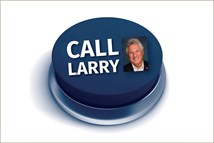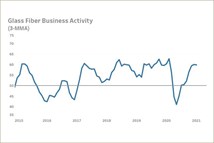Dow Doubles on Composites Research
Another data point regarding the transition toward what may be considered non-traditional materials for automotive applications (unless, of course, said applications are for cars with (1) price tags that are generally at or above six figures or (2) use on Formula One circuits) comes from Dow Automotive Systems, which has recently opened two labs with a focus on developing carbon fiber composites.
Another data point regarding the transition toward what may be considered non-traditional materials for automotive applications (unless, of course, said applications are for cars with (1) price tags that are generally at or above six figures or (2) use on Formula One circuits) comes from Dow Automotive Systems, which has recently opened two labs with a focus on developing carbon fiber composites.

One was opened in Freienbach, Switzerland. This is a 2,153-square-foot facility that features a large, high-pressure resin transfer molding machine (RTM) that’s used for prototype production. And because composite components are typically mechanically fastened and then adhesively bonded (after all, you’re not going to weld them), it features an Adhesives Training Center, as well.
The other lab was opened in Midland, Michigan, where The Dow Chemical Co. is based. Consequently, this 5,005-square-foot operation is close to corporate R&D, including analytical science, its Materials Engineering Center, and an array of polymer chemistry and processing expertise. Which is undoubtedly helpful. A focus at this lab is on the technologies associated with direct long-fiber processing, prepreg, performing, compression molding, and laminating.
As vehicle manufacturers begin to face the challenges of regulations that require increased fuel efficiency and reduced greenhouse gas emissions, not only is it going to be alternative powertrains, but significantly lighter vehicles, which composites certainly can help realize.
While they are pricey at present, let’s face it: hybrid systems and full-electric vehicles aren’t cheap, either.
RELATED CONTENT
-
TRW Multi-Axis Acceleration Sensors Developed
Admittedly, this appears to be nothing more than a plastic molded part with an inserted bolt-shaped metal component.
-
On Automotive: An All Electric Edition
A look at electric vehicle-related developments, from new products to recycling old batteries.
-
Cobots: 14 Things You Need to Know
What jobs do cobots do well? How is a cobot programmed? What’s the ROI? We asked these questions and more to four of the leading suppliers of cobots.


.jpg;width=70;height=70;mode=crop)






